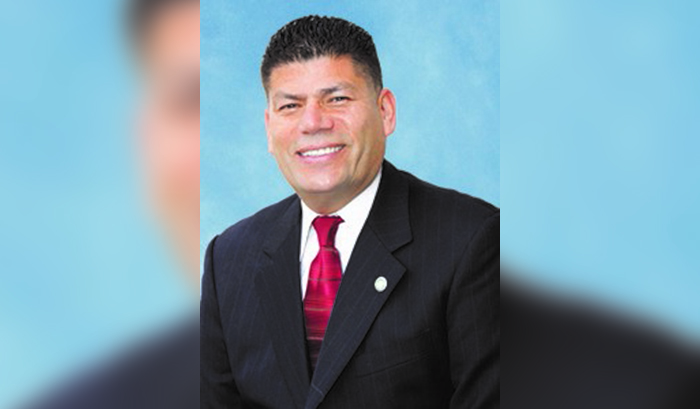Second of two parts
Re “Sen. Price Has a Question, and the Middle School Offers Enthused Answers”
The last two hours of yesterday morning on the sunny campus of the Culver City Middle School offered a textbook illustration of how politics and community are intended to smilingly but soberly clasp hands and benefit each other.
State Sen. Curren D. Price Jr. (D-Culver City) had sent word from Sacramento days earlier that he would spend all day Thursday visiting four separate sites in his Senate district to gauge, more personally, how acutely budget cuts were affecting his constituents.
At 10 o’clock, his deputy Fahizah Alim arrived at the Middle School for a background session with a roundtable group that included Principal Jon Pearson, leader of the meeting, Interim Supt. Patty Jaffe, School Board member Kathy Paspalis, parent Leslie Gardner and Doyle Hanks, a former student of Ms. Jaffe’s on the same property almost 30 years ago, but now an astute seventh-grade English teacher. He made pertinent student-oriented observations throughout the semi-formal conversation.
An important point: This was a quietly conducted exchange of information, not a live-seals political performance. It helped not to have an audience.
As the clock neared the noon lunch hour, it appeared that Sen. Price could declare “mission accomplished” because of his no-nonsense, business-only mood, and, equally, because of the unassailable laser-focus of the educators. Both parties eschewed bluster symbolism, conducting themselves as if they were behind the wheels of their cars and no other eyes could see them transacting their business.
Five particular impressions:
• As his campaign for re-election reached the final 60 days, Sen. Price violated the First Commandment of politicians. He entered the meeting room at the Middle School, in the company of aide James Westbrooks, at precisely the agreed-upon moment, 10:45. He strode in modestly, as if he were the janitor or a teacher’s aide, quite without fuss, wearing a sport coat and tieless. Sitting down promptly and quietly, as is his manner, he asked the central question:
How are budget cuts affecting your district?
• Mr. Pearson. When his school days are over, he can segue seamlessly into a much more lucrative management position based on his firm, clean-cut, emotionless, evenhanded, direct, data-centric-with-out-losing-the-big-picture approach that gave Sen. Price the information he sought without a single excessive syllable. He just as easily could have been commanding a roundtable of CEOs. He kept the meeting unblinkingly trained on its narrow multi-targets.
• Ms. Paspalis. The voters who took a chance on the first-time School Board candidate last November would have cheered her strongly yesterday for conveying to Sen. Price, almost staccato-style, a comprehensive portrait of the District’s fiscal pains and aches without hyperbole or flair. With the help of Ms. Gardner, she told him of powerful and enthusiastic parental/communal contributions, chief among them the overwhelming passage of last year’s Parcel Tax, which begins its annual yield of $1.2 million in December. Ms. Gardner mentioned broadbased parental financial support to the tune of $2,000 for each of nine different teams.
• Seventh-grade English teachers, recalling the lessons of good little boys and girls at Christmastime, are supposed to be seen but not heard, which, fortunately, did not apply to Mr. Hanks. Selectively choosing his openings, he provided the only inside-the-classroom perspective at the table, including a recollection of a formerly disconnected student who told him, poignantly, “I never knew English could be fun.”
Finally, Ms. Jaffe. If there had been a quorum of School Board members observing yesterday’s pastiche, they might have been inclined to take up Board Vice President Scott Zeidman’s hint-hint earlier this week, that his colleagues at least consider, possibly, possibly, making Ms. Jaffe the permanent choice. As if she were a baserunner in baseball sliding into second base, Ms. Jaffe, typically pitching her role to exactly the proper degree, simmering, not too hot, not too cold, showed where and why she belongs.
Ms. Alim, a longtime former reporter for the Sacramento Bee, recorded voluminous data and opinions at the meeting, covering nearly half a notebook on the effects of the state and federal budget dieting, even though Culver City seems to have taken much more of a glancing blow rather than a head-on assault:
• Class sizes for kindergarten-through-grade 3 are slightly higher than desirable, but at those ages when individual attention may be more crucial, one or two additional students can be critical.
• The loss of a satchel full of elective classes is not to be minimized because it is these types of so-called educational bonuses that historically have elevated the Culver City district beyond random neighborhood public schools.
• Culver City is hindered by a domino effect because state legislators, as is their annual wont, are months behind in approving a budget, the lag creating widespread budget-planning uncertainty. Ms. Paspalis noted that LAUSD-eligible transfers comprise 15 to 20 percent of the Culver City District’s enrollment, and a veritable necklace of uncertainties is leaving both Los Angeles and Culver City school leaders in the planning lurch.






